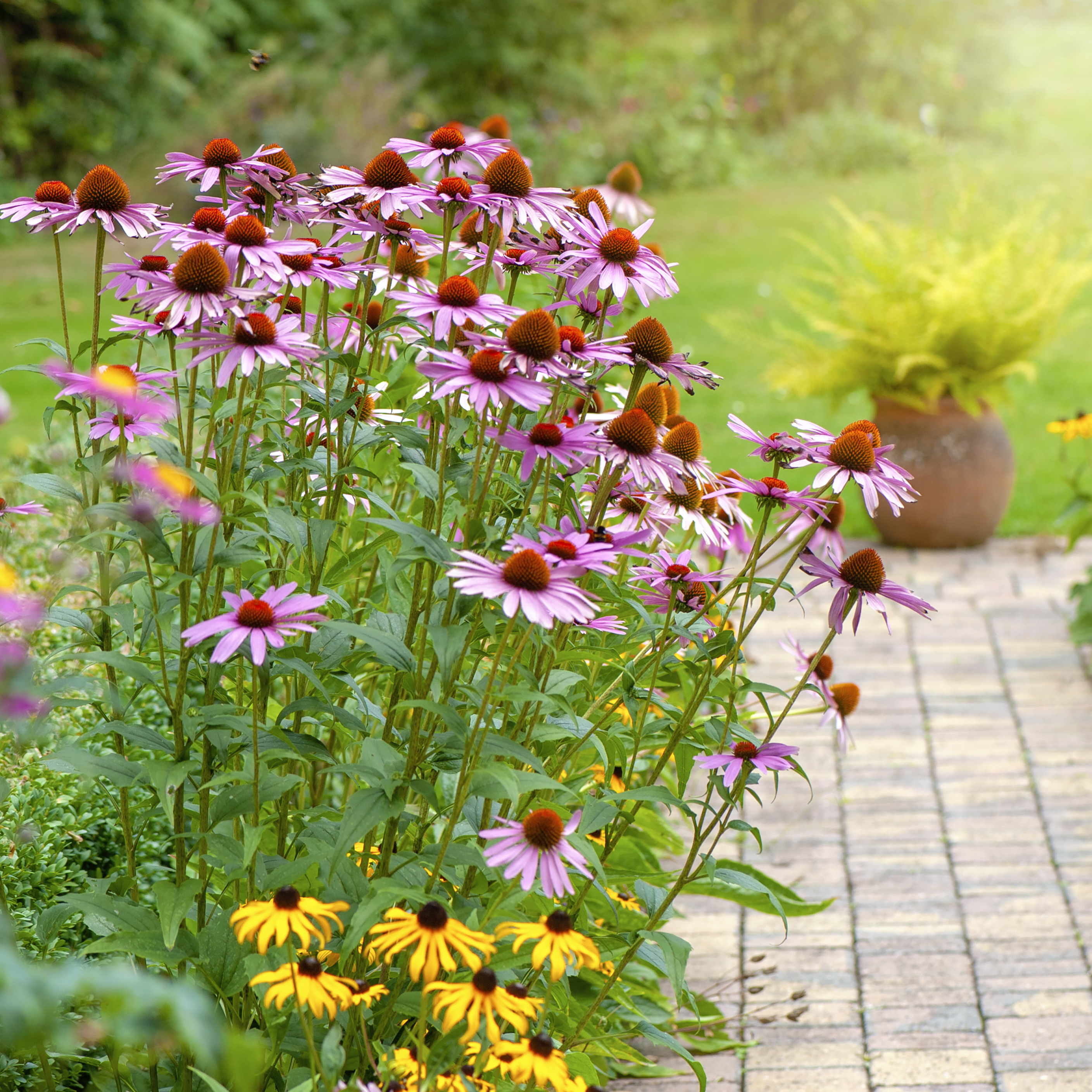
Spring is in full bloom, but if your garden is looking a little empty right now and you’re after easy ways to fill the gaps that won’t cost a fortune, then sowing your own perennial plants from seed is the way to go.
Most garden plants are either annual or perennial. Annual plants flower, set seed, and die within 12 months, while perennials live for several years. Sown in early spring, many long flowering perennials will bloom in their first year and then return year after year, so they can be a great money-saver with the added advantage of not having to replant beds and borders every season.
While it may take a little more effort starting off your own perennials from seed, as opposed to buying ready-grown plants at a garden centre, the price of a packet of seeds costs way less, plus you’ll have masses of seedlings to pot on when you’re in need of garden border ideas.
‘There are some brilliant perennial varieties that are surprisingly easy to sow from seed - perfect for gardeners looking for long-term reward without a huge investment,’ says Elise Harlock, Brand Manager at Prestige Flowers.
‘You can fill a border for a fraction of the cost of buying mature plants, and watching them grow year after year builds a real connection with your garden. It’s also a more sustainable option - less plastic, less transport, and fewer resources used overall.’
1. Echinacea

Looking for a colourful and easy-care perennial to brighten up your flower beds? You won’t go wrong with cheery echinacea. With vibrant, daisy-like flowers, they come in a variety of shades from warm yellows and oranges to cooler pinks and purples and look fabulous planted en masse in borders. They are prolific self-seeders, too, meaning they’ll spread naturally, with the potential of new plants appearing for free in your garden.
‘Echinacea are a classic cottage-garden favourite,’ says Elise. ‘The seeds are easy to sow indoors in early spring, and they thrive in sunny, well-drained spots. Once established, they’re super-hardy and attract bees and butterflies in droves.’
Where to buy Echinacea seeds:
- Sarah Raven: The Catherine-wheel shaped flowers and mixed colours of Echinacea purpurea 'Paradiso Mix' are super pretty.
- Suttons: Stock up on the easy-to-grow Echinacea purpurea 'Brilliant Star' seeds
2. Lupins
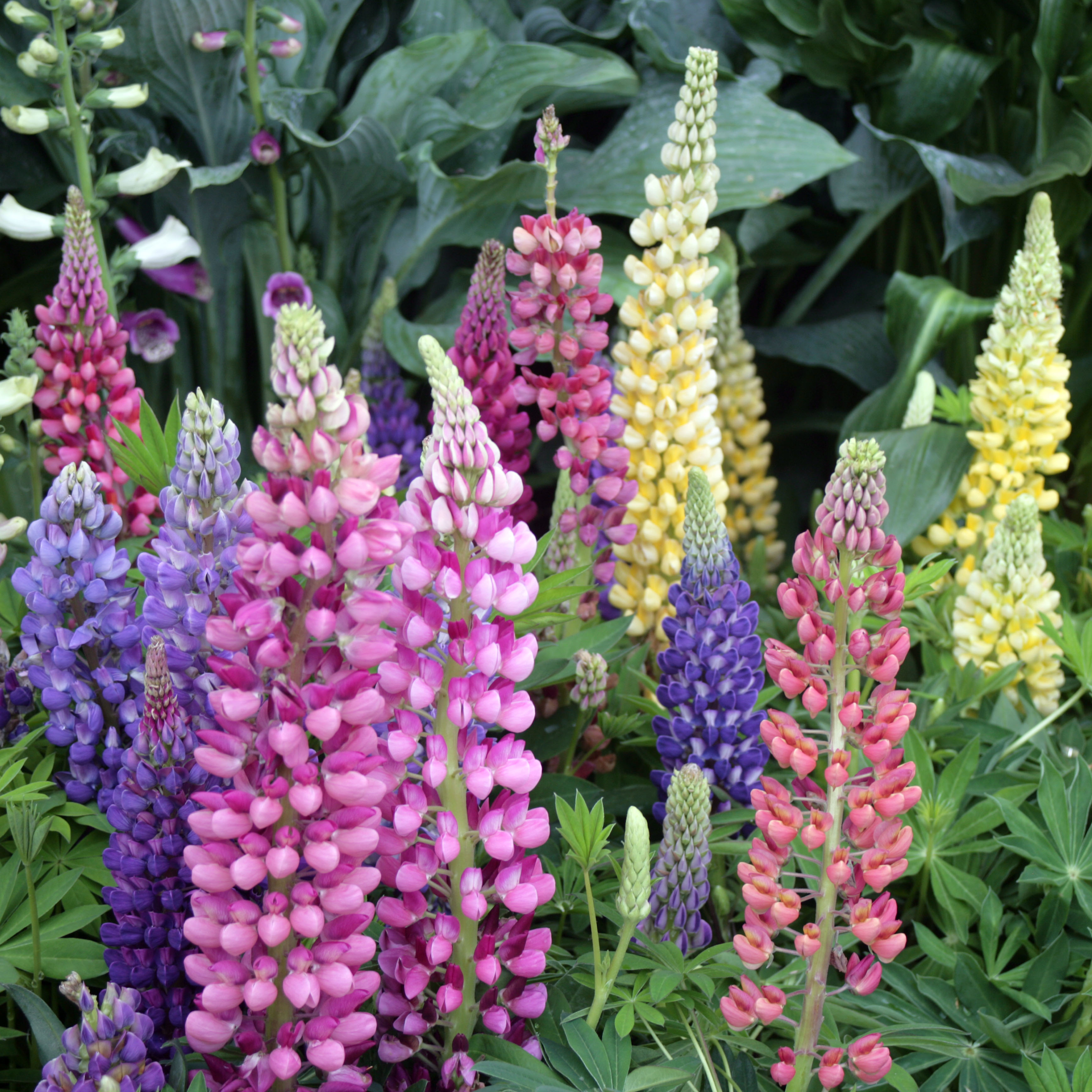
Another cottage-garden classic, lupins are instantly recognisable with their bold, colourful flower spikes and are the perfect choice if you want to add height to garden borders.
‘Lupins bring that bold, architectural shape to beds and borders,’ says Elise. ‘They do well in full sun and can tolerate poor soil - though they hate sitting in water, so make sure drainage is good.’
‘For an extra boost when sowing perennials like lupins, soaking the seeds overnight will enable the hard outer layer to soften and make it easier for water to penetrate and initiate germination,’ says Angharad James, Product Manager at Maxicrop. ‘When soaking, we recommend adding a dash of Maxicrop® All Purpose Plant Growth Stimulant (you can pick this up on Amazon) to the water. It will help plants grow strong and healthy from seed to full bloom and can help increase germination rates.’
Where to buy lupin seeds:
- Suttons: Get started with Lupin 'Gallery Mix' a resilient perennial with robust colourful spikes
- Thompson & Morgan: Or try the pretty bicolour blooms of Lupin 'Avalune Mixed'
3. Aquilegia
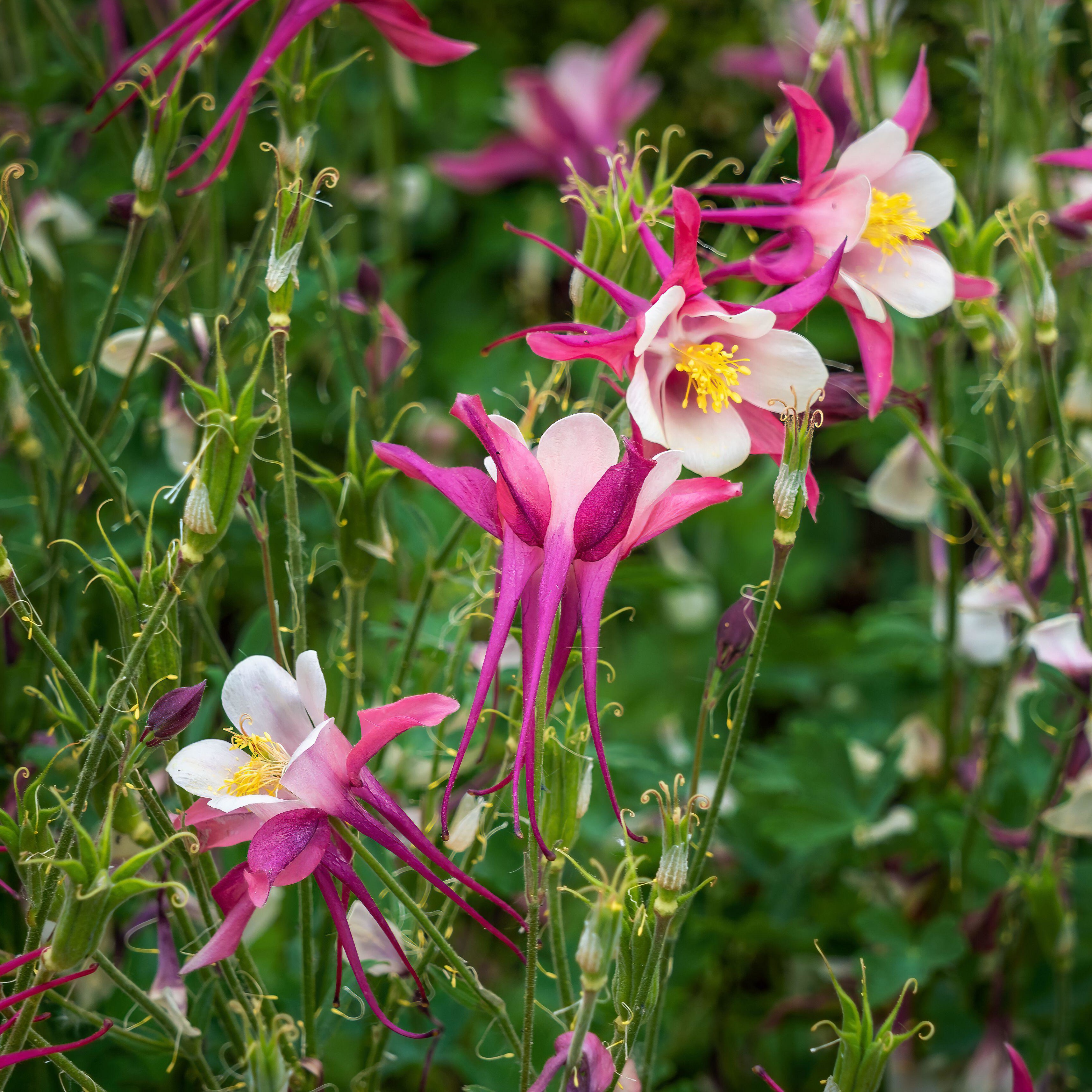
Aquilegia, also known as columbine or granny’s bonnet due to its distinctive nodding cap-shaped flowers, comes in many varieties and colours, from bold reds and hot pinks to softer purples, whites and even two-tone flowers. Foliage is attractive, too, with delicate scalloped leaves that provide a good backdrop for other plants.
'Aquilegia are delightfully low-effort,’ says Elise. ‘Plants will self-seed once established, but starting from seed is very simple - just sow directly in spring or autumn. Unfussy about soil type, they’re great for shadier spots and do well in informal garden borders or naturalistic, wildlife-friendly gardens.’
Where to buy aquilegia seeds:
- Suttons: We love the multicoloured Aquilegia 'Pretty Bonnets Mix'
- Mr Fothergills: Get started with the sunny-coloured RHS Aquligia Yellow Queen
4. Coreopsis
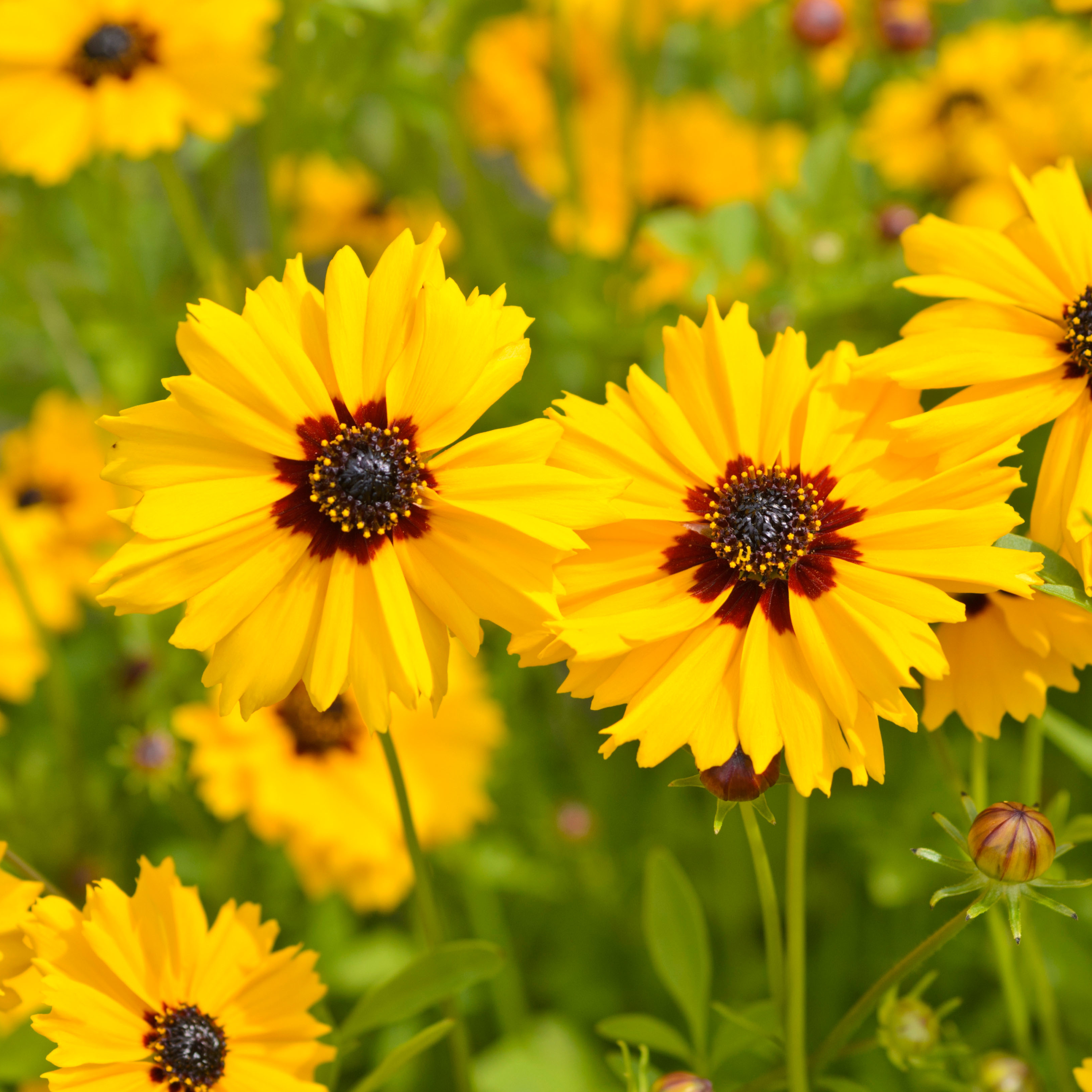
‘A brilliant beginner-friendly perennial with bright, daisy-like flowers, coreopsis is drought-tolerant, flourishes in full sun, and will bloom for months with very little attention,’ says Elise.
Coreopsis can be annual or perennial, with perennial coreopsis bearing mostly yellow flowers with some pink-flowered and bicoloured varieties. A timely garden job to do in April, coreopsis seeds can be sown outdoors in prepared soil after the last frost. Just keep soil moist, and don’t cover the seeds, as they need light to germinate.
Where to buy coreopsis seeds:
- Suttons: Go bold with the vibrant yellow and orange Coreopsis Mardi Gras'
- Thompson & Morgan: Multicoloured Coreopsis x hybrida 'Incredible Dwarf Mix' are a brilliant choice
5. Delphiniums
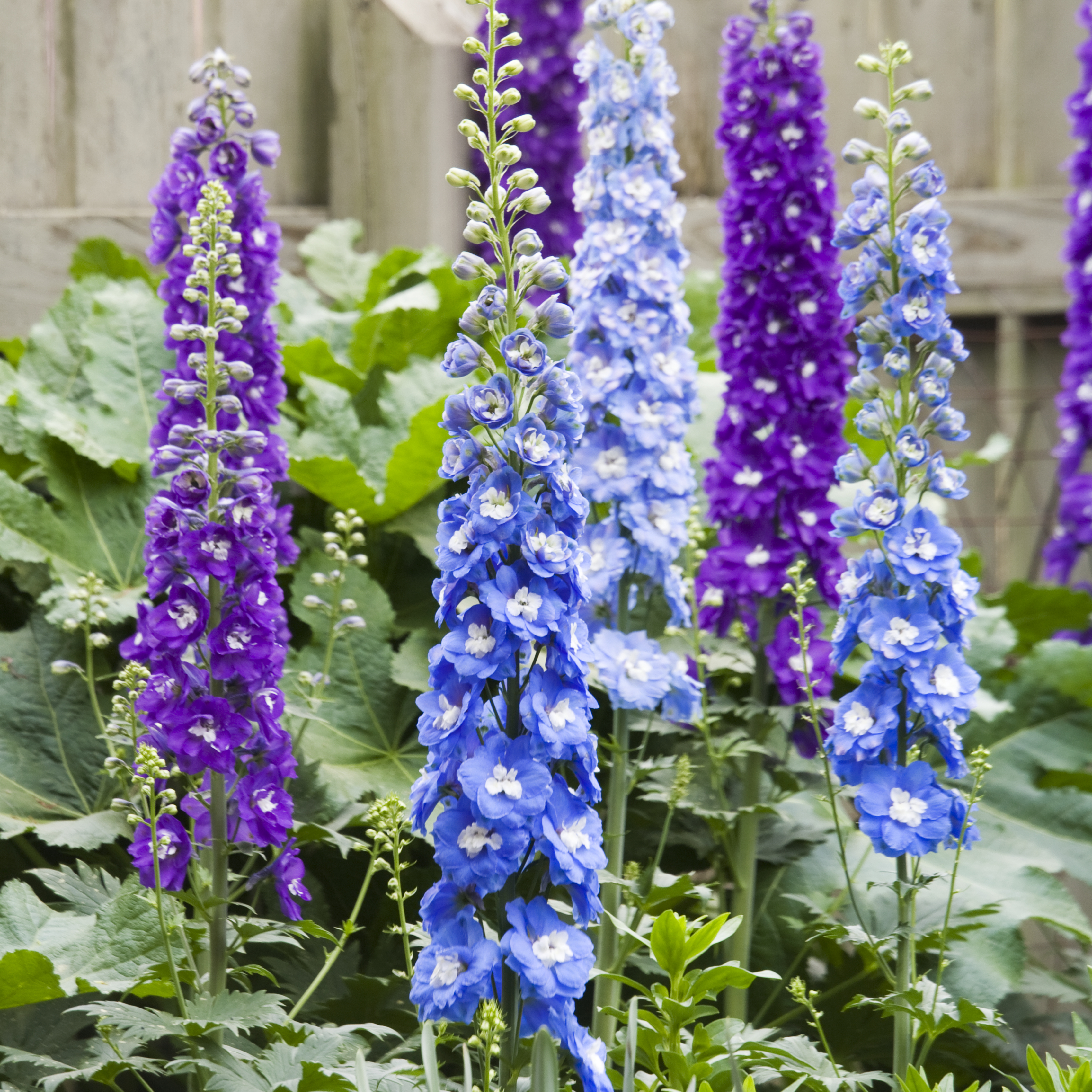
Showstopping delphiniums are the perfect choice if you want to bring a touch of drama to your beds and borders. With their lofty flower spikes, they are a great border staple and look fabulous planted in groups of two or three, bringing height to displays and mixing well with mid-level roses and peonies or other vertical blooms.
‘Delphiniums have a bit of a reputation for being fussy, but from seed, they’re quite straightforward,’ says Elise. ‘Sow in late winter or early spring in a cool, bright space. They love rich soil and a sheltered spot, and they’ll repay you with towering blue spikes that are pure drama.’
When plants are established, consider dividing perennials to increase the number of plants you have in your garden. Delphiniums will need digging up and dividing in early spring every 2-5 years, and the new plants created should flower the same year.
Where to buy delphinium seeds:
- Dobies: Pretty up your borders with the classic pastel tones of Delphinium 'Hyacinth-flowered Mix'
- Mr Fothergill: Go for an all-blue variety with the pretty RHS Delphinium Centurion Sky Blue
6. Verbena bonariensis
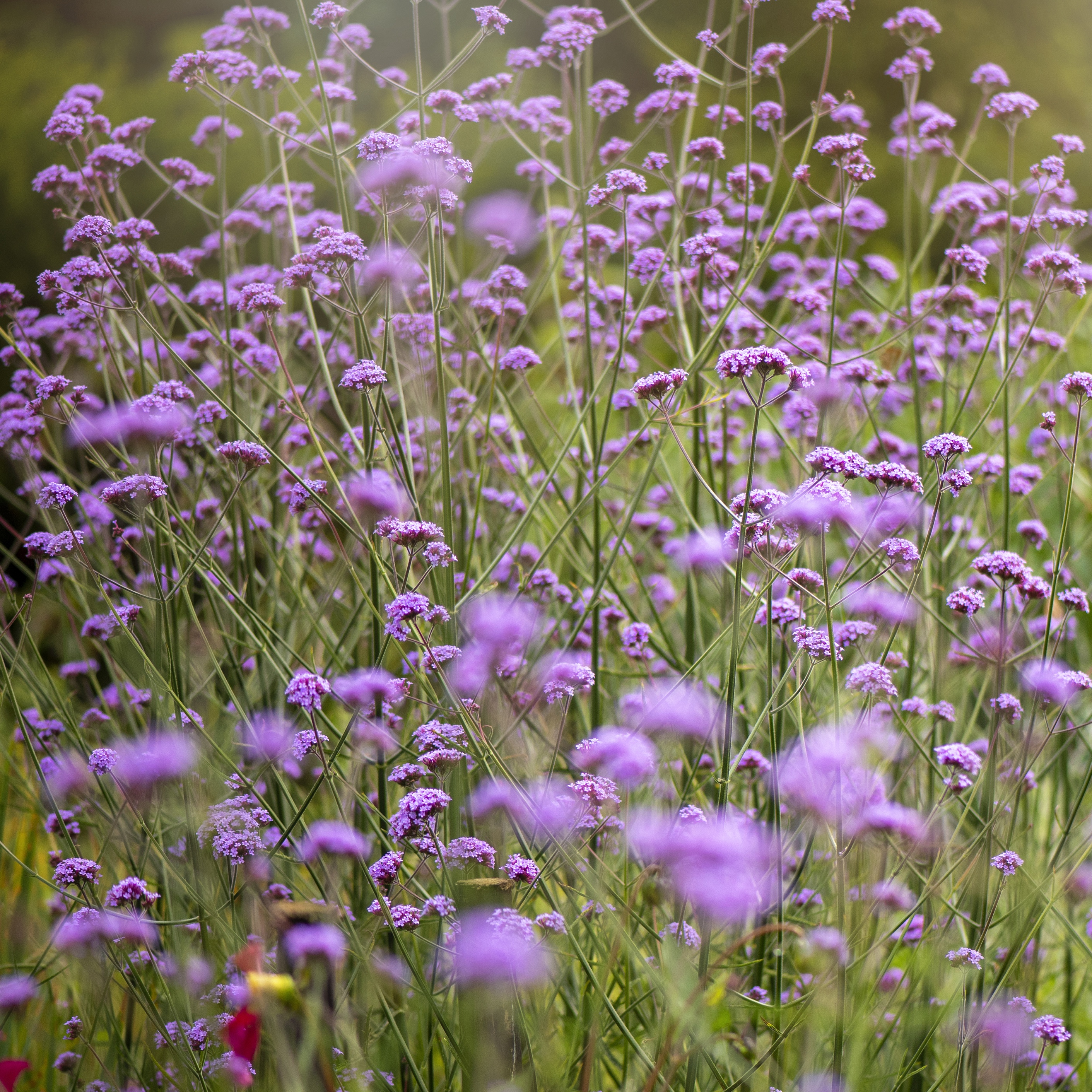
The perfect choice if you want to add height to borders, verbena bonariensis is a tall perennial plant with sparse leafy stems and clusters of lilac-purple coloured flowers on top. Their see-through quality and architectural form make them ideal for adding structure without creating dense blocks of colour.
Verbena bonariensis is easy to grow from seed,’ says Phoebe Cater, Plant Buyer at British Garden Centres, ‘and their nectar-rich flowers are irresistible to bees, butterflies and other pollinators, so perfect for wildflower garden ideas. Sow indoors in late winter/early spring and maintain a warm temperature of 24-27 degrees until germination. This only takes around 2-3 weeks.
Where to buy Verbena bonariensis seeds:
- Thompson & Morgan: Classic Verbena Bonariensis and a bargain buy too
- Marshalls Garden: Verbena seeds 'Bonariensis Vanity' will give a blaze of colour
7. Dianthus
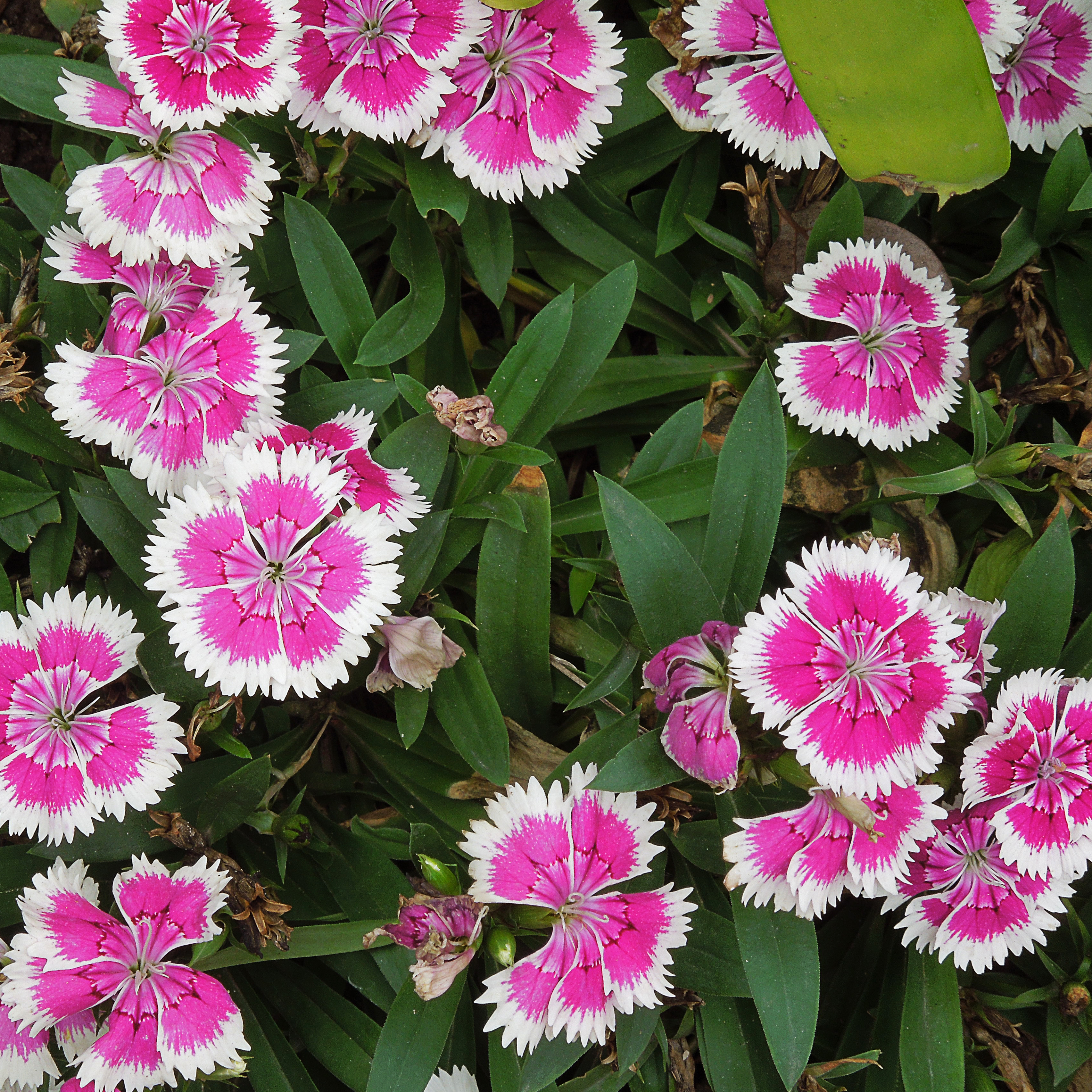
Perfect for container gardens as well as borders, Dianthus are a staple in cottage and cutting gardens offering an abundance of blooms and a wonderful scent. Often know as ‘pinks’ this refers to the serrated edge of the petals that looks like they’ve been trimmed by pinking shears, rather than their colour.
‘Dianthus are a great addition to the garden,’ says Phoebe. ‘They are easy to grow, shock resistant and able to tolerate a range of soil conditions. Seedlings take only around 2 weeks to germinate and are ready for planting in the garden 6-8 weeks later.’
Some varieties, such as ‘Sweet Purple White Bicolor’ and ‘Sweet Pink Magic’, can flower the same year if started in a heated propagator in January, February, or March and planted out in April or May.
Where to buy Dianthus seeds:
- Sarah Raven: Try the richly coloured Dianthus barbatus 'Electron Mix'
- Thompson & Morgan: Opt for the super-pretty pink and white Dianthus deltoides 'Arctic Fire'
FAQs
What is the best time to plant perennial seeds?
‘For most perennials, the best time to sow seeds is in early spring (February to April), when you can give them a head start indoors or in a greenhouse,’ advises Elise. ‘You can also sow some in late summer or autumn, especially hardy varieties like aquilegia, to give them a natural cold period before spring growth.’
‘Once seedlings appear, the key is not to rush them outside. Harden them off gradually by placing them outdoors during the day and bringing them in at night for a week or two.’
'And don’t overcrowd them - thinning out seedlings might feel ruthless, but it’s vital for strong, healthy plants.’
'Label everything clearly,’ adds Elise, ‘and keep an eye on moisture - seedlings don’t like to dry out, but soggy roots can lead to rot. Water from below if possible to keep leaves dry and avoid disease.’
What is the easiest perennial to grow from seed?
‘Many beautiful and hardy perennials can be easily grown from seed, including yarrow, coreopsis, echinacea, columbine and perennial salvia,’ says Angharad James at Maxicrop.
While some perennials may reward you with flowers in their first year if started from seed early enough in the season, most do require a little more time to establish themselves, so they may not flower until the second year. For faster-growing perennials, consider lupins, crocosmia and achillea.
Perennials to avoid include purple loosestrife and ox-eye daisy which can quickly get out of control, as well as foxgloves, which look glorious but are short-lived and toxic if you have children or pets.







